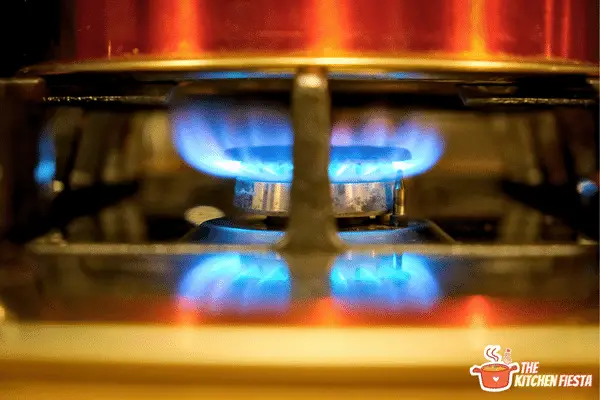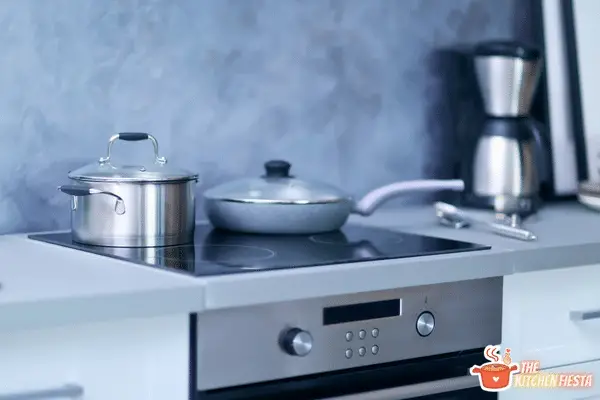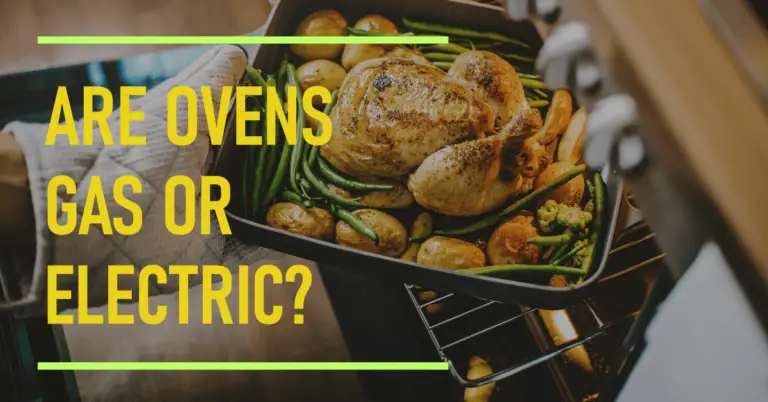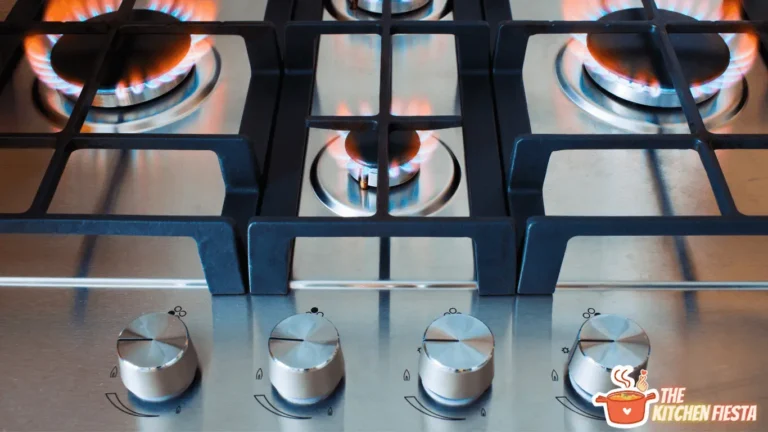Gas or Electric Stoves: Which Do Home Buyers Prefer?

Kitchen stoves are one of the most important appliances in any home. When it comes to choosing between gas or electric stoves, there are a lot of factors to consider from cooking performance to environmental impact. This extensive guide examines the key differences between these two main types of kitchen ranges to help you decide whether a gas stove or electric stove is better suited for your needs.
Which is generally better: gas or electric stove?
The short answer is that it depends on your priorities and needs. Gas stoves excel at high heat cooking and provide more instant temperature control, while electric stoves tend to have more even heat distribution and are simpler to operate and maintain. Electric stoves are also safer and better for indoor air quality.
Below we’ll explore all the details on cooking ability, baking performance, ease of use, operating costs, safety, and environmental impact to help you weigh the pros and cons of gas vs electric stoves. Read on to make an informed decision for your kitchen!
How Do Gas Stoves Work?

Gas stoves utilize natural gas or propane gas that is delivered via a gas line hooked up to your home. The burners on a gas stove use an open flame to produce heat that warms pots and pans placed on top.
Most gas stoves have sealed burners which contain the gas flame and allow easier cleaning. The size of the burners varies, with larger ones producing more heat. Each burner has a control knob that adjusts the flow of gas to raise or lower the heat intensity.
Some of the key parts of a gas stove include:
- Gas line – provides the natural gas or propane to the stove
- Burners – contain the gas flame and transfer heat to cookware
- Igniters – light the burners
- Control knobs – adjust the gas flow to control heat
- Grates – support pots and pans above the burners
How Do Electric Stoves Work?

Electric stoves use heating elements powered by electricity to produce heat for cooking. Most electric ranges have both a cooktop cooking surface and a built-in oven.
The cooktop contains electric coil elements or smooth glass ceramic surfaces with elements underneath. Electricity runs through the elements to heat them up, and they transfer heat to pots and pans. The heating elements provide a range of heat with different wattages.
Electric ovens also use electric heating elements that generate heat within the oven cavity to bake and broil food. The key components of an electric stove include:
- Electric heating elements – convert electricity into heat
- Cooktop surface – coil elements or smooth glass top
- Oven heating elements – provide heat for baking
- Temperature controls – regulate heat levels
Safety Considerations: Gas vs Electric Stoves
One of the main factors when weighing gas vs electric stoves is home safety. Both types come with some risks that are important to keep in mind.
Gas stoves use an open flame and emit products of combustion, which creates some safety concerns:
- Risk of gas leaks and explosions
- Potential exposure to carbon monoxide
- Open flames can burn or ignite things accidentally
Electric stoves also have high voltage components which can pose safety issues if not used properly:
- Risk of electric shock from exposed wiring
- Potential burn hazard from hot heating elements
- Overheating risk if malfunctioning
General safety tips for stoves include:
- Keep flammable items away from burners
- Have gas stoves professionally installed
- Keep children away while cooking
- Clean regularly to prevent gas ignition issues
- Use oven mitts and handle covers
Overall, electric stoves tend to have a better safety profile than gas stoves for indoor residential use given their lack of open flame and lower emissions.
Cost Comparison: Gas vs Electric Stoves
Another factor to weigh is the cost differences between gas and electric stoves. This includes both upfront costs and long-term operating costs.
Purchase Price
On average, the purchase price for a new gas stove ranges from $500 – $2,500 depending on the brand, size, and features.
Electric stoves have a similar price range, between $500 – $2,500. High-end models with convection baking and induction cooktops can cost up to $5,000.
Generally, gas and electric stoves have similar price points. You may be able to find more low-cost options for basic electric ranges. High-end professional models are widely available for both gas and electric.
Installation Costs
Installing a new gas stove also requires installing gas lines if they don’t already exist, which can add $500 – $1,500+ to costs.
Electric ranges simply need a standard electrical hookup which is much less expensive, around $100 – $250.
Operating Costs
Gas stoves are often cheaper to operate long-term than electric. Using a gas stove costs around $35 – $45 per year on average, while an electric stove averages $55 – $75 per year to run.
However, gas prices can fluctuate while electricity prices remain more stable. And the cost differences are often not huge, perhaps $30 annual savings for gas.
Heating Ability and Control
One area where gas stoves really shine is the level of temperature control and heating power they provide.
The open flames and instant heat of gas burners make it much easier to rapidly boil water or get a pan very hot. Professional chefs often prefer gas stoves for high heat cooking like searing meats.
You have more immediate control with gas burners, allowing quick temp adjustments. Electric elements are slower to heat and cool. For delicate cooking, the instant responsiveness of gas makes it easier.
However, electric cooktops have improved greatly in recent years, with smoother temperature control. And induction ranges can rival gas’s quick precision.
Simmering and Low Heat Performance
While gas excels at high heat, it can have some limitations on delivering consistent gentle heat.
Some gas burners struggle to maintain extremely low temperatures needed for simmering and delicate cooking. The open flame nature and ventilation of gas stoves makes it trickier.
Electric elements, especially induction cooktops, tend to have more accuracy and stability at very low heats. So they can have an advantage for extremely low temperature cooking.
Oven Baking Ability – Gas vs Electric
When it comes to oven performance for baking, broiling and roasting, electric ovens tend to have some advantages over gas ovens.
Electric ovens utilize heating elements around the oven cavity to generate heat. This provides very even and consistent heat distribution throughout the whole oven.
Gas ovens rely on a gas burner at the bottom of the oven. Since heat rises, gas ovens tend to create more intense heat at the bottom than the top. This can lead to uneven baking.
Electric ovens are also better at maintaining precise temperatures. The cycling of a gas burner makes temperatures fluctuate more in a gas oven.
So for baking, an electric stove with oven may provide better results than a gas range. Serious home bakers often prefer electric ovens for their accuracy and consistency.
Ease of Cleaning and Maintenance
Another consideration when choosing between gas or electric stoves is how easy they are to clean and maintain over many years of use.
Cleaning Gas Stoves
Gas stoves require a bit more regular cleaning to keep them operating safely and prevent issues lighting burners.
The open flames of a gas stove create soot and grime buildup on burners, grates and around control knobs. This needs regular cleaning or it can clog burner ports causing ignition problems. Stuck-on spills also need scrubbing.
Gas stoves allow spills and food debris to fall below the burners and grate. This hidden area needs occasional deep cleaning.
Cleaning Electric Stoves
Electric stovetops, especially smooth glass top varieties, tend to be much easier to wipe clean after cooking.
Since they don’t emit flames, not as much grime builds up on electric stove cooking surfaces compared to gas stoves. Any spills are easy to see and wipe up after cooking.
The hidden bottom area of an electric range stays cleaner than a gas range too.
Electric ovens also don’t produce as much grease and stuck-on spills as gas ovens. And electric smooth top ranges don’t have crevices on their cooktops that can trap food.
Overall maintenance is simpler for an electric stove.
Reliability and Durability
Both gas and electric stoves can provide many years of service with proper care and maintenance. However, there are some differences in their lifespan and durability.
Electric heating elements have a long lifespan, usually 10-15 years on average. Over time, electric elements may begin taking longer to heat up or develop hot spots. Replacing them is a simple job.
Gas stove components undergo more wear and tear over time. The constant open flames cause gas burners to degrade after 5-10 years, losing heating power. Igniters and valves also require replacement every 5 years or so.
When weighting gas vs electric ranges, it’s worth considering that electric stoves tend to have a longer reliable lifespan before needing repairs.
Which Stove Type is Better for the Environment?
Another aspect to consider is which stove type has less impact on the environment.
Gas stoves burn natural gas which emits nitrogen dioxide, carbon dioxide and other air pollutants. This contributes to reduced indoor and outdoor air quality.
Using a gas stove for cooking accounts for a significant portion of residential greenhouse gas emissions. Replacing gas stoves with electric is one of the most impactful steps for going green.
Electric stoves powered by renewable energy like solar or wind have virtually no emissions. And utilities are transitioning more electricity generation to renewables each year. So environmentally, electric stoves are usually the better choice over gas stoves.
Pros and Cons of Gas Stoves:
Pros:
- Provide very high heat for fast boiling or searing
- Instant temperature control from open flames
- Cheaper to operate long-term than electric
- Familiar experience many cooks are used to
Cons:
- Produce indoor and outdoor air pollution
- Open flame is less safe than contained elements
- More difficult to clean around burners and grates
- Less durable components with shorter lifespan
- Struggle to maintain ultra-low simmer temperatures
Pros and Cons of Electric Stoves:
Pros:
- Safer cooking experience with no open flame
- Provide very even heat distribution for baking
- Smooth glass tops are easier to wipe clean
- No gas leaks or buildup of combustion byproducts
- Heating elements are long-lasting
- More eco-friendly with lower emissions
Cons:
- Slower to heat up and cool down than gas
- Temperature precision still trails gas stoves
- Operating costs may be higher than gas ranges
- Some dislike cooking without a live flame
Expert Recommendations on Gas vs Electric Stoves
To help decide between a gas or electric stove, it can be useful to consider recommendations from cooking experts.
Consumer Reports reviews stoves extensively and rates both gas and electric models highly. They find the top electric smooth top and induction ranges compete well on cooking performance compared to gas. CR highlights the even baking of electric ovens too.
Many chefs acknowledge the advantages of gas for responsiveness but feel induction electric ranges are viable alternatives. America’s Test Kitchen experts note high-end electric stoves match pro-style gas ranges on nearly all cooking abilities these days.
Conclusion – Should You Choose Gas or Electric?
There are persuasive cases to be made for both gas and electric stoves depending on what features are priorities for you.
Gas stoves allow more instant and precise heat control. But electric stoves have caught up in many areas like low heat simmering. And electric ovens tend to provide much more even baking results.
Electric stoves are simpler to operate and maintain over many years. And they have a stronger safety profile with enclosed elements instead of live flames.
Environmentally, electric stoves are the cleaner choice as utilities shift towards renewable electricity. But gas is still cheaper to operate in the near term.
Weigh the pros and cons carefully for your own needs. If you desire professional-style responsiveness, a gas stove still provides a great cooking experience. But electric ranges offer great performance as well, with advantages like easier cleaning and maintenance.
So choose based on the features most important to you – a responsive live flame, or safer and simpler electric cooking. Either can be an excellent choice for cooking meals with delicious results.






